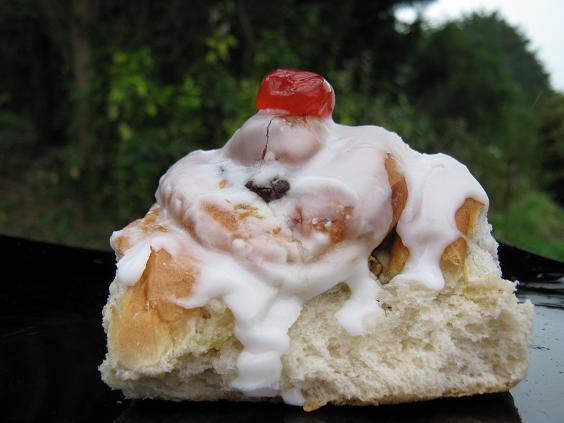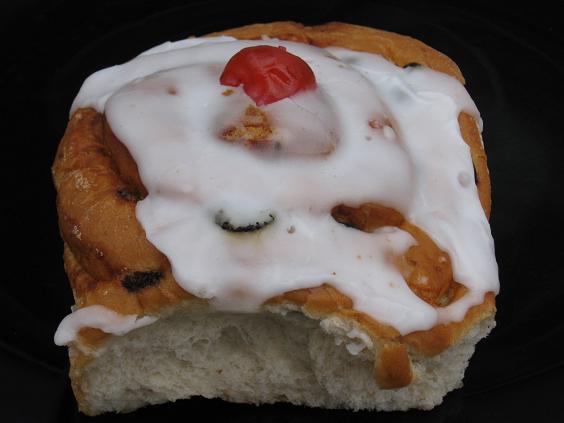

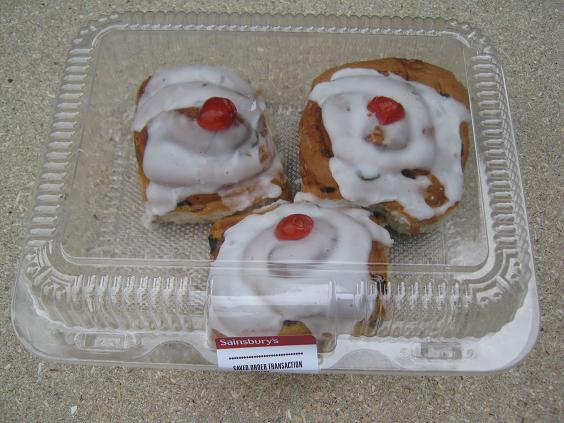 At first sight I was a little worried by these buns. I hid them in the freezer for a week for practical reasons, but there was also a sense of
'out of sight, out of mind'. I had a problem with the rather square shape of the buns - they reminded me of mutant Chelsea buns that had been iced,
which smacks of geographic opportunism.
At first sight I was a little worried by these buns. I hid them in the freezer for a week for practical reasons, but there was also a sense of
'out of sight, out of mind'. I had a problem with the rather square shape of the buns - they reminded me of mutant Chelsea buns that had been iced,
which smacks of geographic opportunism.
On closer examination, I became rather intrigued by the erratic shape. As you can see, each of the buns in the package is unique - there is no
sense that they are identical worker-buns, laid by a queen-bun and raised in a bun-hive. They look hand crafted and speak of the bakers artful labour
rather than the dour clank of the ACME bun-o-matic.
In keeping with their rustic appearance, they make no claims about their content or nutritional value.
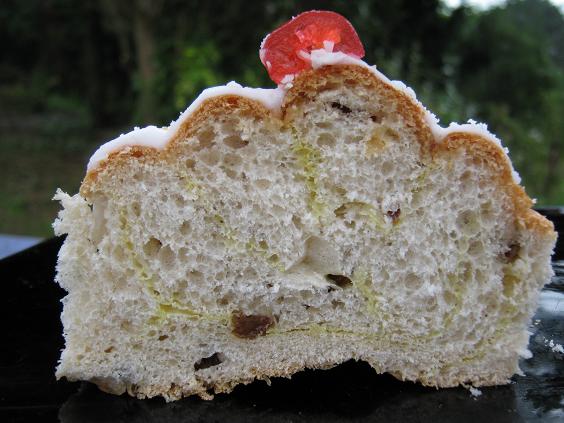 I found they had a bigger first bite than the reach of my mouth. The bun was soft, chewy, light and slightly dry. It had a distinct hollow sound when the bun was tapped
. The lemon curd was spread in even trails through the bun, and imparted a distinct lemon taste. The internal structure was not really coiled
as much as bundled together, which added to its whimsical charm.
I found they had a bigger first bite than the reach of my mouth. The bun was soft, chewy, light and slightly dry. It had a distinct hollow sound when the bun was tapped
. The lemon curd was spread in even trails through the bun, and imparted a distinct lemon taste. The internal structure was not really coiled
as much as bundled together, which added to its whimsical charm.
The half cherry on the top was delightful. Rich, childhood red and large enough to taste, a little treat so that I wasn't sure whether to eat it up
quickly or save until the end. It is little quandries like this that add entertainment value, and should really be included in any honest list of ingredients.
The icing was dry and slightly brittle. It looked as though it had been applied hot and allowed to cool and set. On an overly dry bun this could lead to catastrophic
laminar fragmentation on eating, but in this case the bun had sufficient moist tenacity to retain the topping.
The bun was packed with whole sultanas which were a soft and aromatic compliment to the light dry bun body. In the test sample I discovered 68 of them.
 In a maritime county it seemed appropriate to check the suitability of the Belgian Bun as a seaside picnic. I was interested to see how well the bun resisted
the effects of water, and to measure its ability to float. If you click on the picture, a short illustrative video clip will appear (technology permitting).
In a maritime county it seemed appropriate to check the suitability of the Belgian Bun as a seaside picnic. I was interested to see how well the bun resisted
the effects of water, and to measure its ability to float. If you click on the picture, a short illustrative video clip will appear (technology permitting).
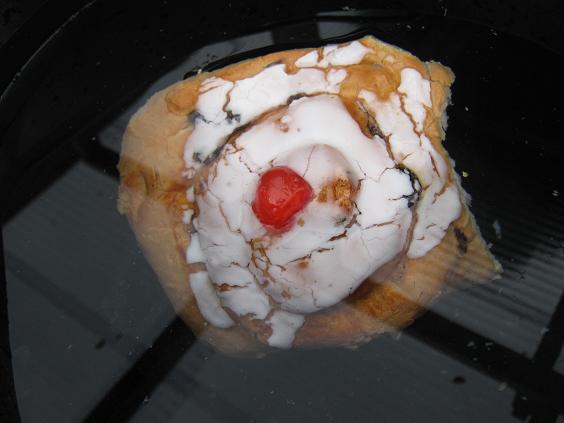 I was astonished by the buns determination to remain afloat. After five minutes it was still floating, which leads me to suggest that in times of extreme flooding
it could possibly be used as an emergency flotation device, perhaps saving a small domestic pet such as a hamster from inconvenience or preserving
a door key from oblivion in the briny depths!
I was astonished by the buns determination to remain afloat. After five minutes it was still floating, which leads me to suggest that in times of extreme flooding
it could possibly be used as an emergency flotation device, perhaps saving a small domestic pet such as a hamster from inconvenience or preserving
a door key from oblivion in the briny depths!
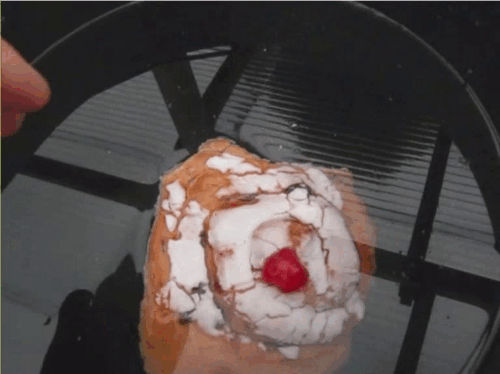 After five minutes immersion I did a test to measure the bouyancy of the bun. The video clip here shows the consequnces of complete immersion. The cherry
was dislodged by the vigour with which it returned to the surface, but the bun remained remarkably intact.
After five minutes immersion I did a test to measure the bouyancy of the bun. The video clip here shows the consequnces of complete immersion. The cherry
was dislodged by the vigour with which it returned to the surface, but the bun remained remarkably intact.
 The bun was removed from the test chamber, and divided by vertical section. As can be seen, the inner structure had become entirely saturated
and the bun had collapsed down. Water continued to drain from the bun for a considerable period of time.
The bun was removed from the test chamber, and divided by vertical section. As can be seen, the inner structure had become entirely saturated
and the bun had collapsed down. Water continued to drain from the bun for a considerable period of time.
